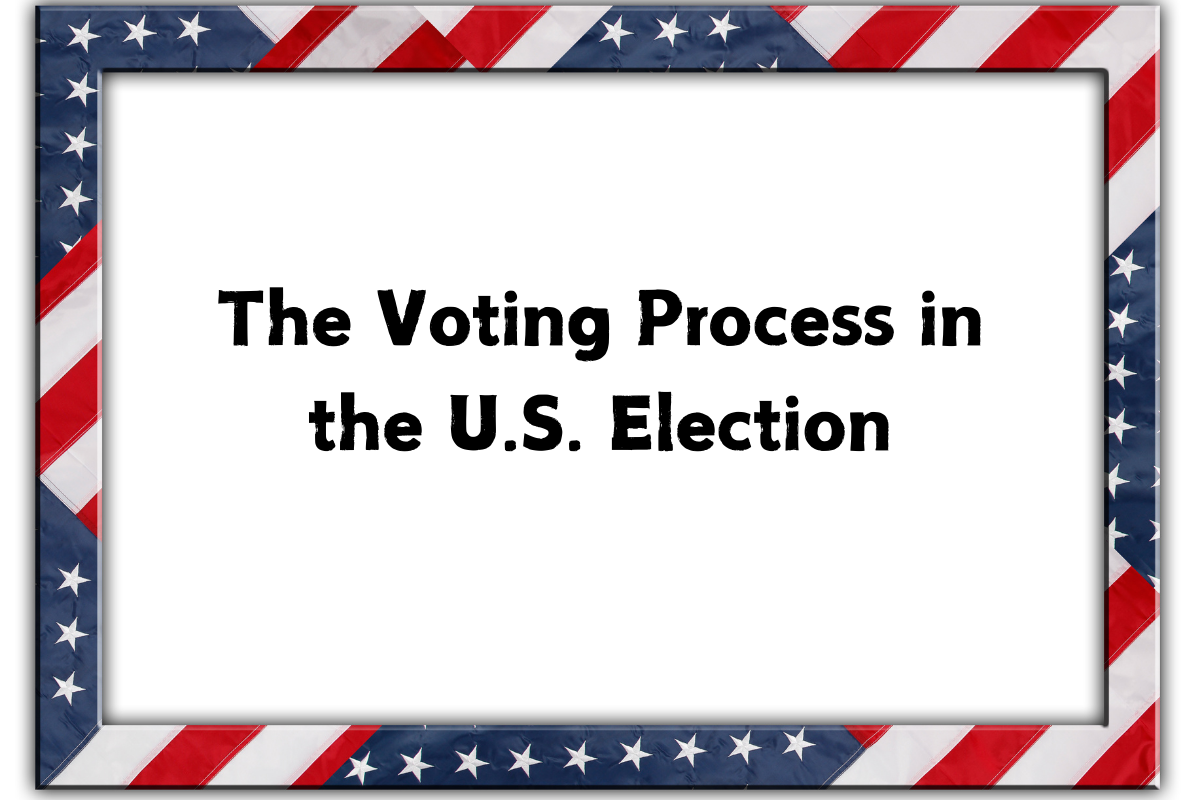The Voting Process in the U.S. Election
The voting process in U.S. elections is a structured and essential part of American democracy 民主(mínzhǔ). Every four years, citizens across the United States vote for their next president, along with numerous other state and local officials. The voting process aims to reflect the will of the people (人民意愿 rénmín yìyuàn) while ensuring representation across a range of geographical and population-based interests. This process includes a mix of in-person voting 现场投票(xiànchǎng tóupiào) and mail-in voting 邮寄投票(yóujì tóupiào) options, allowing for diverse participation.

Registering to Vote 注册投票
Before voting, citizens must register 注册(zhùcè) with their state or local election authority. Each state has specific guidelines regarding the registration process, and deadlines can vary. Registration ensures that each vote cast is legitimate and that all eligible voters 合格选民(hégé xuǎnmín) have access to the ballot. In some states, citizens can register online, by mail, or in person. Voter registration is a critical step, as it helps prevent voter fraud 投票欺诈 (tóupiào qīzhà) and maintains the integrity of the election system.
Types of Voting Methods 投票方式
The U.S. offers multiple ways to cast a ballot投票(tóupiào), making it more accessible to a wide range of voters. In-person voting 现场投票(xiànchǎng tóupiào) is the traditional method, where voters go to polling places on Election Day选举日(xuǎnjǔ rì) or during early voting periods. In many states, early voting is available weeks before Election Day, allowing flexibility for those who may not be available on the actual day.
The Role of the Electoral College 选举人团的作用
Once all votes are counted, the results contribute to the Electoral College 选举人团 (xuǎnjǔ rén tuán) outcome. This is a unique feature of the U.S. system, where each state has a set number of electoral votes 选举人票 (xuǎnjǔ rén piào) based on its population size. In almost all states, the candidate who wins the most votes in that state secures all its electoral votes (a system known as "winner-takes-all"). The candidate who reaches at least 270 of the 538 total electoral votes becomes the president-elect 当选总统(dāngxuǎn zǒngtǒng).
Final Certification and Inauguration 最后认证与就职典礼
The final results are certified by Congress 国会(guóhuì) in early January, officially confirming the new president-elect. Then, on Inauguration Day 就职典礼 (jiùzhí diǎnlǐ), typically January 20, the president-elect takes the oath of office 宣誓就职(xuānshì jiùzhí) to begin their term. This peaceful transfer of power 和平交接(hépíng jiāojiē) is a defining feature of the U.S. democratic process.